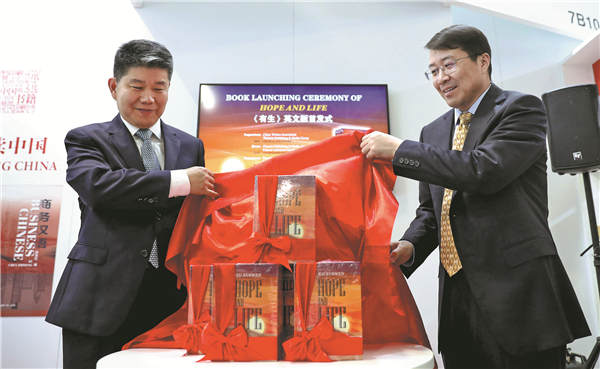A novel tale of life and death in rural China
By Yang Yang | China Daily | Updated: 2023-04-21 07:41

Commenting on the novel, Wang Binbin, professor of Chinese literature at Nanjing University, says, "The novel provides a fresh spiritual temperament and attitude toward life, and the characters, especially the Great Grandmother, are very unique in Chinese literature."
For Hu, the Great Grandmother is not only a witness of history, but an individual whose destiny had been profoundly influenced by historical changes. In the character, he injected a perseverant spirit that he observed in people who live in the harsh environment of Zhangjiakou.
"The deaths of her three husbands and nine children are terrible blows. For a while, she wants to commit suicide, but chooses to live on to help women give birth. That's how she sees life and death," Hu says.
The Great Grandmother, who has suffered various miseries throughout her life, and has witnessed many births and deaths, becomes especially tough, wise, kind and tolerant. She is a spiritual idol for many people.
Wang says that the writer tries to look for modern spiritual resources, a foundation for modern life, from traditional China.
Another problem that Hu faced before starting the novel was that of characterization. He needed a protagonist from the countryside whose profession involves traveling around and see a broader world, to provide enough space to tell the stories of different people.
He thought of midwives, who traveled around serving people from all walks of life and classes, and who would witness the birth of new lives and sometime deaths of babies and mothers.
"Midwifery is an ancient profession. Even in the 1980s, women in rural areas were still being assisted by traditional midwives to deliver babies. I saw, several times, how they worked in the 1970s, because all my younger brothers and sisters were born with their help," Hu says.
The third problem that Hu needed to solve was to find a proper structure around which to weave the stories from the past and present.
Han compares the novel's structure to a cobweb woven around the Great Grandmother.
"Such a structure offers the narrating voice the freedom to travel between the past and present, the real and fictional, and the eternal and transitional, without appearing loose," she writes.
"Other critics said it's an open structure, but for me, it's an umbrella," Hu says.
"Whichever it is, I'm just happy that it provides a space for people to interpret and discuss."
























